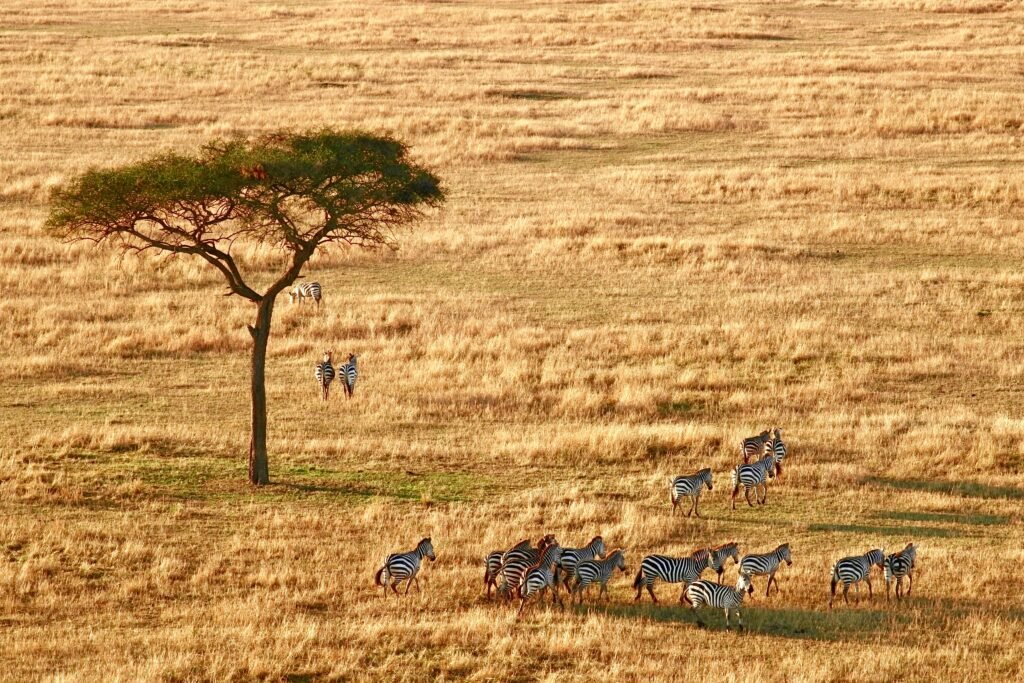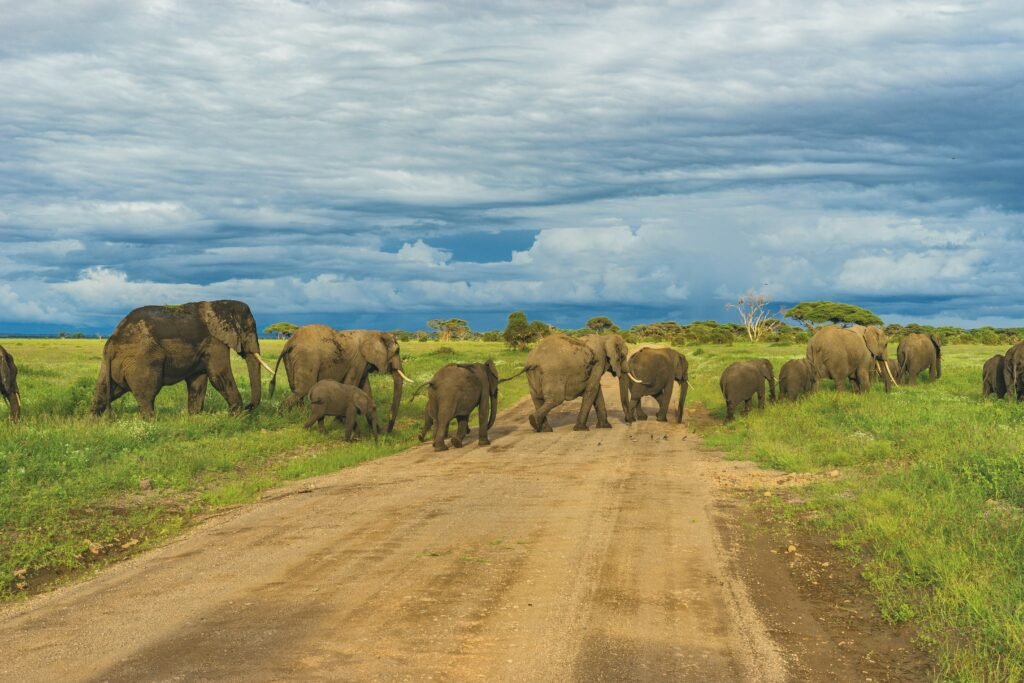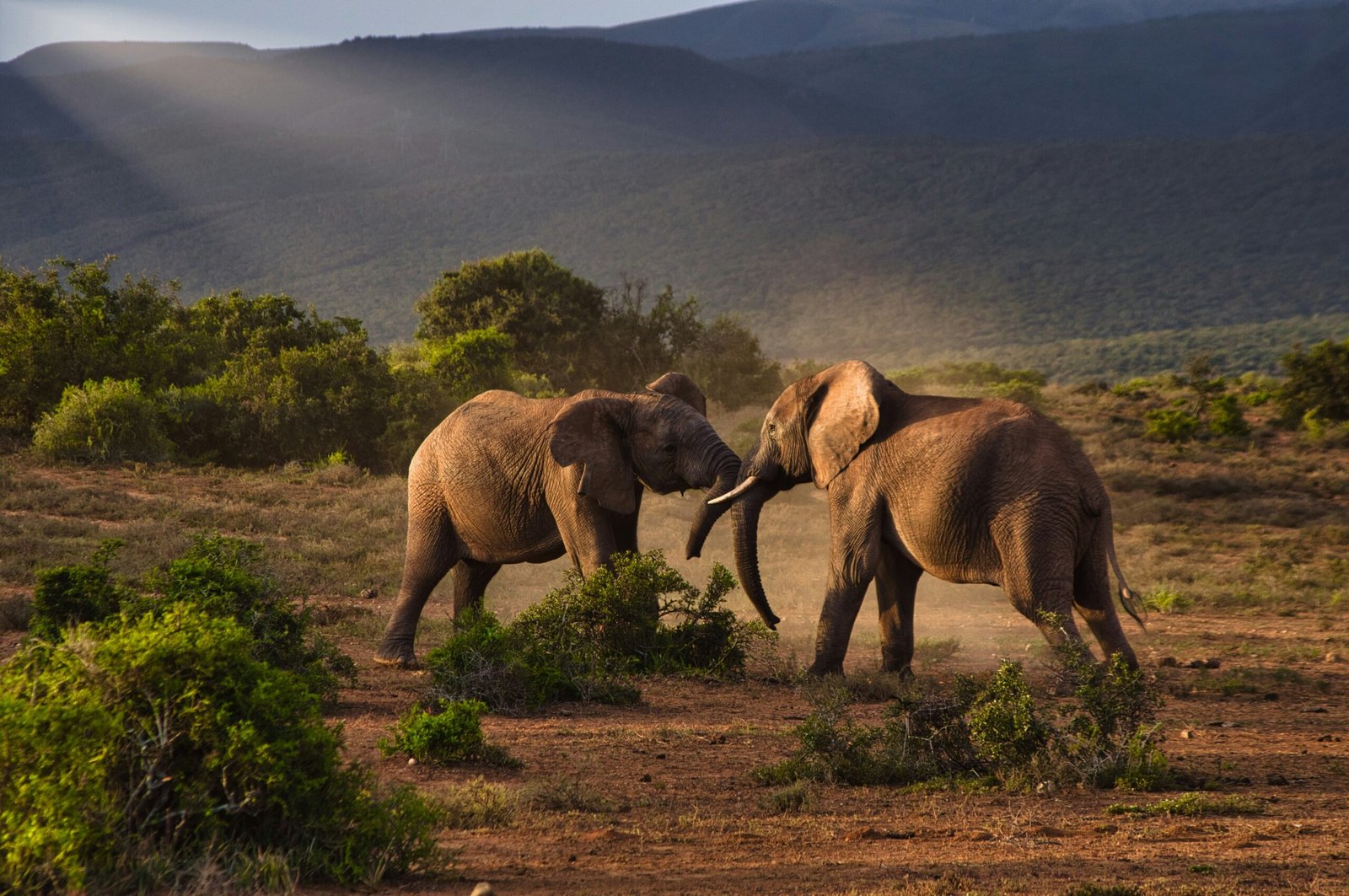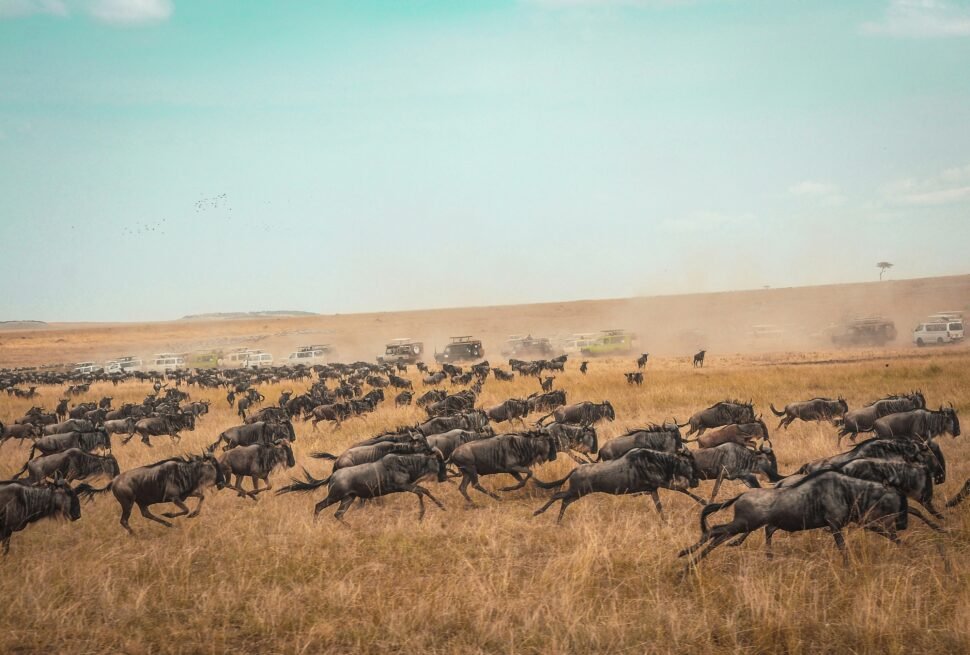Table of Contents
Tanzania is one of the best safari destinations in Africa. Travelers come here to experience wildlife, nature, and a rich cultural heritage. This guide explains the basics of Tanzania safari seasons in a clear and simple way. We will explain the differences between Dry seasons and Wet seasons, and give you useful tips for planning your safari. Whether you are new to travel or a seasoned explorer, this guide is written to provide useful information for both.
Introduction
Tanzania is known for its amazing wildlife and beautiful landscapes. A safari in Tanzania is a great way to see animals like lions, elephants, and giraffes in their natural habitat. The country’s weather plays an important role in planning a safari. Understanding the Tanzania safari seasons is key to making the most of your trip.
The two main seasons in Tanzania are the Dry seasons and the Wet seasons. Each season offers different advantages and challenges. In this guide, you will learn:
- What to expect during Dry seasons and Wet seasons
- How the seasons affect wildlife behavior
- Tips on when to plan your safari based on your interests
- Practical advice for travelers on packing, safety, and planning
By the end of this guide, you will have a clear picture of the seasons and be ready to choose the best time for your adventure.
Understanding Tanzania’s Climate and Safari Seasons
Tanzania has a varied climate because of its diverse geography. The country has tropical lowlands, high plateaus, and even cooler highlands. These different regions create unique weather patterns that are important for safaris.
In general, the year is divided into two main periods:
- Dry seasons: When there is little rain and the weather is sunny and warm.
- Wet seasons: When heavy rains come and the landscape becomes very green.
Together, these periods make up the two major seasons. Knowing about these seasons can help you plan your trip so that you see the wildlife and landscapes you want.
Why Weather Matters on Safari
Weather influences where animals go, what they do, and how easy it is to see them. During Dry seasons, water becomes scarce. Animals gather around the few waterholes, making them easier to spot. On the other hand, during Wet seasons, water is plentiful, and animals spread out across a larger area.
In addition, the weather affects the travel experience. In Dry seasons, the roads are often easier to navigate, and the skies are clear. In Wet seasons, the roads can be muddy and some areas may be harder to reach. By understanding these patterns, you can plan a safari that matches your interests.
Exploring Dry Seasons
The Dry season in Tanzania typically last from June to October. This period is popular with travelers because of several advantages. In the Dry season, you can expect:

- Clear, sunny days: There is very little rain during this time.
- Less vegetation: The lack of rain means the trees and bushes are thinner. This makes it easier to see wildlife.
- Wildlife concentration: Animals come together at waterholes and rivers because water is scarce. This makes game viewing more reliable.
Weather and Landscape During Dry Seasons
During the Dry season, the weather is warm during the day and cooler in the early mornings and evenings. The sun shines brightly, and the sky is usually clear. The landscape takes on a golden hue as the vegetation becomes sparse. Because of these factors, the Dry seasons are a favorite time for photographers and nature lovers.
How Wildlife Behaves in Dry Seasons
When water is hard to find, animals such as elephants, antelopes, and zebras gather around the few available water sources. Predators, like lions and cheetahs, use this opportunity to hunt. This predictable behavior is one of the main reasons many visitors choose the Dry season for their safari. You will likely see large groups of animals in one place, which makes for an exciting and active wildlife experience.
Practical Tips for Dry Seasons
- Plan Early Drives: Early morning and late afternoon are the best times for game drives when the temperatures are lower.
- Bring Sunscreen and a Hat: The strong sun means you need protection from the rays.
- Carry Water: Stay hydrated during the hot days.
- Wear Light Clothing: Light, breathable clothing helps you cope with the heat.
The Dry seasons provide a clear view of the animals and landscapes. If you want a safari with high chances of spotting wildlife, the Dry seasons are a good choice.
Exploring Wet Seasons
The Wet seasons in Tanzania usually occur from November to May. This period brings heavy rains and a very different environment compared to the Dry seasons. Many travelers find the Wet seasons appealing for several reasons:

- Lush landscapes: The rains make the countryside green and vibrant.
- Fewer tourists: The Wet seasons are considered the low season, so there are fewer visitors. This can offer a more private experience.
- Birdwatching: The abundant water and food attract many birds, making it an excellent time for bird enthusiasts.
- New life: Many animals give birth during this season, offering a chance to see baby animals.
Weather and Landscape During Wet Seasons
In the Wet season, the weather is unpredictable. Some days have heavy rains, while others may be partly cloudy or sunny. The constant rain turns the landscape into a green paradise. Rivers and lakes fill up, and the plants grow thick and lush. Although heavy rain may sometimes disrupt travel plans, the beauty of the Wet season makes up for these challenges.
Wildlife Behavior in Wet Season
During this season, animals do not need to gather around a few waterholes because water is everywhere. This means they are more spread out. While this can make wildlife harder to spot on a game drive, it also means the animals are living in a healthy, thriving environment. Many species have their breeding season during the Wet seasons, so you might see many young animals and a variety of bird species.
Practical Tips for Wet Season
- Pack Waterproof Clothing: Bring rain jackets, waterproof shoes, and quick-dry clothing.
- Plan for Delays: Be flexible with your travel plans as heavy rain might slow down the journey.
- Use Insect Repellent: Wet weather often increases the number of insects, so be prepared.
- Bring a Good Camera: The dramatic skies and lush backgrounds can create beautiful photography opportunities.
The Wet seasons offer a unique safari experience. Although wildlife may be more dispersed, the green landscapes and abundance of birds and baby animals make this time special for nature lovers.
How Weather Shapes Wildlife Behavior in Tanzania Safari Seasons
Weather has a direct impact on the way animals behave in the wild. In the Dry seasons, the scarcity of water forces animals to gather in predictable areas. This makes it easier for visitors to see large groups of animals during a safari. In contrast, the Wet seasons spread out water sources across the land, causing animals to roam over larger areas.
Temperature and Energy
Animals adjust their behavior based on temperature. In the Dry seasons, many animals avoid the heat by moving during the early morning or late afternoon. This behavior not only helps them conserve energy but also gives safari-goers the best times to see them. During the Wet seasons, the cooler temperatures and higher humidity allow animals to be active for longer periods, though thick vegetation can sometimes hide them.
Breeding and Migration
The timing of animal breeding and migration is closely linked to the Tanzania safari seasons. During the Wet seasons, the abundance of food and water supports the birth of many young animals. In the Dry seasons, animals may migrate in search of water. Understanding these patterns is important when planning a safari because it helps you know when to expect major wildlife events.
Regional Highlights:
Different regions in Tanzania offer unique experiences during both seasons. Here are some highlights of the main safari areas:
The Serengeti
The Serengeti is world-famous for its wildlife and annual migration.
- Dry seasons: In the Serengeti, the Dry seasons bring large groups of animals together around limited water sources. This makes game drives very productive.
- Wet seasons: During the Wet seasons, the Serengeti transforms into a lush green landscape with many young animals and a high diversity of bird species.
Ngorongoro Crater
The Ngorongoro Crater is a natural haven for wildlife.
- Dry seasons: The crater is easier to explore during the Dry seasons because the sparse vegetation provides clear views of the animals.
- Wet seasons: In the Wet seasons, the crater becomes more vibrant, and you may have the chance to see newborn animals along with a variety of birdlife.
Tarangire National Park
Tarangire is known for its large herds of elephants and baobab trees.
- Dry seasons: The Dry seasons in Tarangire offer excellent wildlife viewing because animals gather around the Tarangire River.
- Wet seasons: During the Wet seasons, the park is filled with greenery, and the elephant herds are joined by many other species, making it a lively time for nature lovers.
By understanding the regional differences, you can choose the part of Tanzania that best matches your interests during the different Tanzania safari seasons.
How Safari Operators Adapt to Seasonal Changes
Local safari operators have years of experience planning trips around the safari seasons. They know how to adjust itineraries based on the weather. Here are some ways operators adapt:
- Customized Itineraries: Operators plan game drives based on the predictable movement of animals during the Dry seasons and the lush, spread-out wildlife during the Wet seasons.
- Flexible Schedules: Because weather can change quickly, safari companies build flexibility into their plans. This ensures that if heavy rains occur during the Wet seasons, the itinerary can be adjusted.
- Expert Local Guides: Guides use their local knowledge to interpret small changes in the landscape. They can advise on the best areas to visit based on whether it is the Dry seasons or Wet seasons.
The ability to adapt to different Tanzania safari seasons is one of the reasons why a safari in Tanzania is such a rewarding experience.
Planning Your Safari: Tips and Considerations
When planning a safari in Tanzania, it is important to consider what you want to see and experience. Your decision might depend on whether you prefer the clear, concentrated wildlife of the Dry seasons or the lush and varied environment of the Wet seasons.
Key Points to Consider
- Wildlife Viewing:
- In the Dry seasons, animals gather at water sources, making them easier to spot.
- In the Wet seasons, animals are more spread out, but you can see many young animals and vibrant birdlife.
- Weather Conditions:
- The Dry seasons offer clear skies and predictable weather, which is ideal for photography.
- The Wet seasons bring lush green landscapes but may also include heavy rains that could slow down travel.
- Crowd Levels and Costs:
- The Dry seasons are popular, so safaris can be busier and more expensive.
- The Wet seasons are less crowded, which might lead to lower prices and a more personal experience.
- Road Conditions and Accessibility:
- Roads are usually in good condition during the Dry seasons.
- During the Wet seasons, some roads may become muddy or difficult to navigate. Plan accordingly.
What to Pack
Packing appropriately can improve your safari experience. Here are some suggestions for both Dry seasons and Wet seasons:
- For Dry seasons:
- Light, breathable clothing
- Sunscreen, hat, and sunglasses
- A pair of binoculars for wildlife spotting
- Plenty of water and snacks
- For Wet seasons:
- Waterproof jackets and pants
- Quick-dry clothing and sturdy shoes
- Insect repellent and a good quality rain cover for your camera
- Extra plastic bags to keep your belongings dry
Health and Safety Tips
Always keep your health and safety in mind:
- Stay Hydrated: The heat during the Dry seasons can be intense, so drink plenty of water.
- Follow Guide Instructions: Listen to your guide’s advice on safety, especially when near wildlife.
- Be Prepared for Changes: Weather can be unpredictable. Always have a backup plan, particularly during the Wet seasons.
Planning carefully based on the Tanzania safari seasons will help you enjoy more informed and safe safari experience.
Regional Itineraries and Experiences
There are many ways to experience the Tanzania safari seasons depending on your interests. Below are some ideas for different types of travelers.
For Wildlife Enthusiasts
If your goal is to see as many animals as possible:
- Plan for the Dry seasons:
Visit areas like the Serengeti and Tarangire National Park. The concentration of animals around waterholes will provide many opportunities for close encounters. - Guided Game Drives:
Book guided drives where experienced guides know the best spots during both Dry seasons and Wet seasons.
For Photographers
Photographers will find unique opportunities in both periods:
- Dry seasons:
The clear light and open landscapes are perfect for capturing dramatic wildlife scenes. - Wet seasons:
The lush green backgrounds and dramatic skies create beautiful images. Make sure to pack waterproof equipment.
For Bird Watchers
Bird enthusiasts will enjoy the variety during the Wet seasons:
- Migratory Birds:
The Wet seasons attract many migratory bird species that add color and sound to the landscape. - Quiet Moments:
Fewer tourists during the Wet seasons mean you have more time to observe birds in their natural habitat.
For Families and First-Time Travelers
Families and those new to safari travel can benefit from the ease of spotting animals during the Dry seasons:
- Easy Game Viewing:
The concentration of animals makes it easier for beginners to see wildlife. - Educational Opportunities:
Many safari camps offer guided tours that explain how the seasons affect animal behavior and local life.
Frequently Asked Questions About Tanzania Safari Seasons
1. What is the best time to go on a safari in Tanzania?
The best time depends on your interests. The Dry seasons (June to October) offer clear skies and easier wildlife viewing, while the Wet seasons (November to May) provide lush landscapes and fewer crowds. Overall, both periods have unique benefits as part of the Tanzania safari seasons.
2. When does the Great Migration occur?
The Great Migration happens throughout the year, but the peak movement in Tanzania is often observed between December and July. During the Dry seasons, river crossings and large herd movements make it a dramatic part of the Tanzania safari seasons.
3. Can I enjoy a safari during the rainy season?
Yes, you can enjoy a safari during the Wet seasons. Although the weather is more unpredictable and roads may be challenging, the green scenery, birdlife, and the chance to see young animals make it a special time to visit.
4. What is the temperature like during the Dry seasons?
During the Dry seasons, temperatures are warm during the day and cooler in the morning and evening. This makes it comfortable for early game drives and sunset safaris.
5. What should I pack for a safari?
For the Dry seasons, pack light, breathable clothing, a hat, and sunscreen. For the Wet seasons, bring waterproof gear, quick-dry clothing, and insect repellent. Always carry water and snacks, as these are essential in both periods of the Tanzania safari seasons.
6. Are safaris more expensive during the high season?
Yes, safaris tend to be more expensive during the high season, which includes the popular months of the Dry seasons. The Wet seasons often offer lower prices and discounts, making them an attractive option for many travelers.
7. Is Tanzania a good safari destination all year round?
Absolutely. Whether you choose the Dry seasons or the Wet seasons, Tanzania offers unique wildlife experiences and beautiful landscapes. Each period of the Tanzania safari seasons has its own charm and benefits.
Conclusion
Tanzania is a top destination for safaris because of its diverse wildlife and natural beauty. Understanding the Tanzania safari seasons is essential for planning a trip that meets your needs and interests. The Dry seasons offer clear skies, concentrated wildlife, and easy travel conditions. In contrast, the Wet seasons provide lush landscapes, fewer crowds, and unique opportunities for birdwatching and seeing baby animals.
This guide has covered the basics of Tanzania’s climate, how weather influences animal behavior, and practical tips for both the Dry seasons and the Wet seasons. By knowing what to expect during each period of the Tanzania safari seasons, you can choose the best time to visit and plan a safe, enjoyable adventure.
Remember to consider local cultural and environmental factors, and support sustainable tourism practices when you travel. Whether you are a wildlife enthusiast, a photographer, a bird watcher, or a family looking for a memorable experience, a well-planned safari in Tanzania will not disappoint.
Plan your journey, pack smartly, and prepare to witness the beauty of Africa in a way that is both educational and exciting. With careful planning and respect for nature and local communities, your safari will be a rewarding experience during any of the Tanzania safari seasons.
Enjoy the adventure and create memories that will last a lifetime. Your journey into the heart of Tanzania starts with understanding the simple facts about its Dry seasons and Wet seasons—and now you are well equipped to make the best choices for your safari.




